What does coffee bean grade G1 G2 G3 G4 AA PB SHB stand for? Grade of coffee beans in various countries
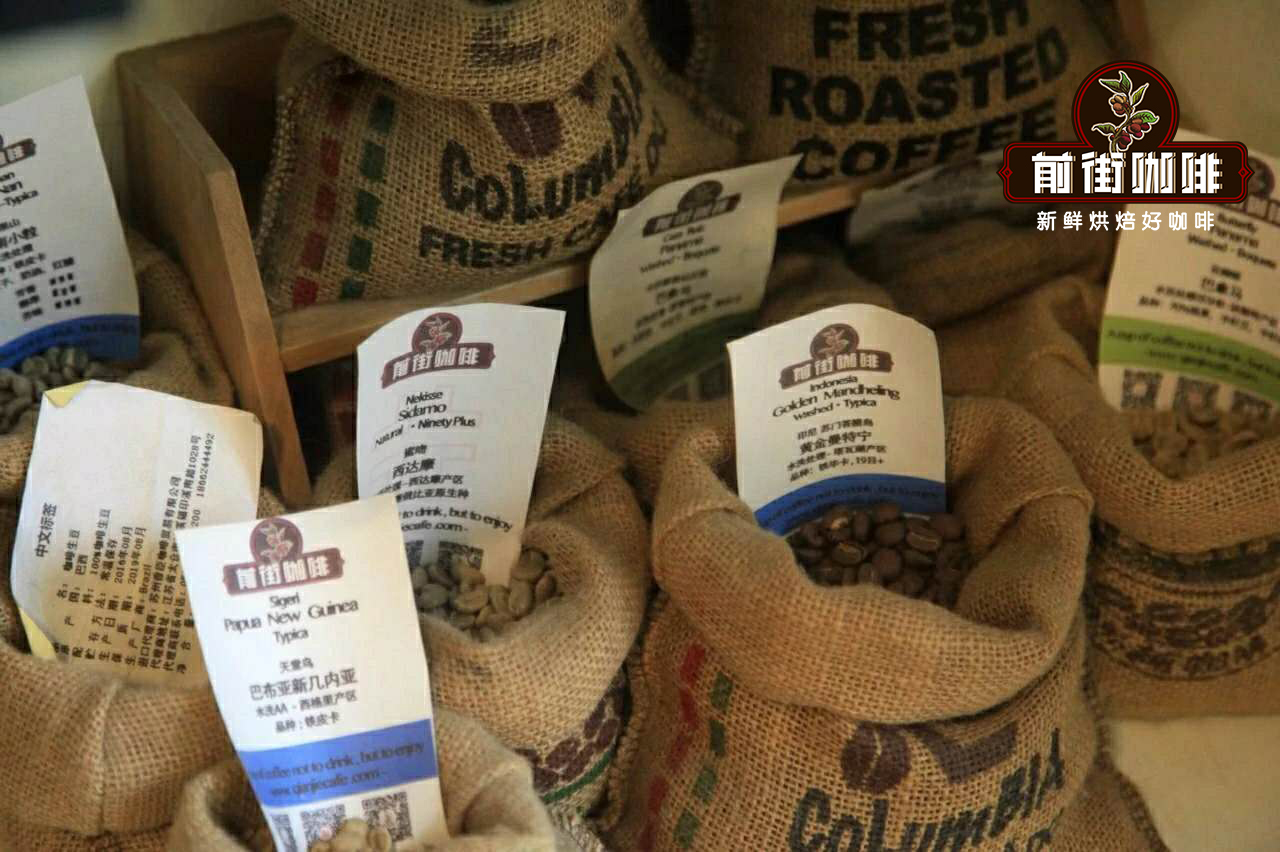
Professional coffee knowledge exchange more coffee bean information please follow the coffee workshop (Wechat official account cafe_style)
I believe that when buying coffee beans, my friends will have heard of Yega Xuefei G2, Kenya AA and so on. For example, G2 and AA represent the grade of raw beans of this coffee, and the grading standards of raw beans in each coffee producing country are different, which can be measured from the aspects of coffee particle size, number of defects, growth altitude, hardness and cup test results. Qianjie Coffee below to share several representative coffee-producing country raw bean grade standards.
Ethiopia
Before the emergence of the Ethiopian Coffee Commodity Exchange (Ethiopia Commodity Exchange, referred to as ECX), Ethiopia's coffee export grade was established by the CLU Department of the Ministry of Agriculture (Cupping and Liquoring Unit), which mainly graded coffee raw beans according to the number of defective beans in 300g, as shown in the table below.
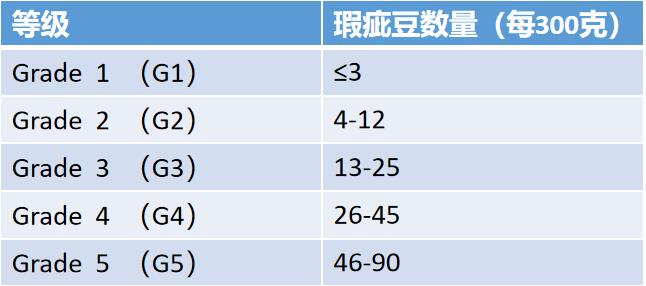
General washing treatment is G1-G2, due to the technical problems of sun treatment at that time, the number of defects of sun-dried beans is relatively large, generally G3-G5, with the improvement of sun treatment technology, now the sun-dried beans can also reach the G1-G2 level.
After the establishment of ECX (Ethiopia Commodity Exchange) in 2008, it was graded by the combination of physical properties of raw coffee beans and cup flavor characteristics.
ECX defines all coffees as unwashed and washed as three types:
A. The number of defects in Speciality is small, and the cup test has high flavor quality.
B. Commercial (Commerical) can not reach the boutique grade, but it is higher than the domestic (Local / Domestic) consumption grade.
C. Coffee with a relatively poor flavor caused by a large number of local / domestic (Local / Domestic) defective beans (unripe beans), out of season and poor storage.
Among them, boutique and commerce are aimed at the export international market. ECX divides coffee raw beans into nine grades according to the total score of physical attribute characteristics and cup test flavor characteristics, of which the physical feature score accounts for 40% and the cup test mass score accounts for 60%.
Physical characteristics (40%):
Washing treatment: number of defects (20%), appearance size (10%), color (5%), smell (5%)
Non-washing treatment: number of defects (30%), odor (10%)
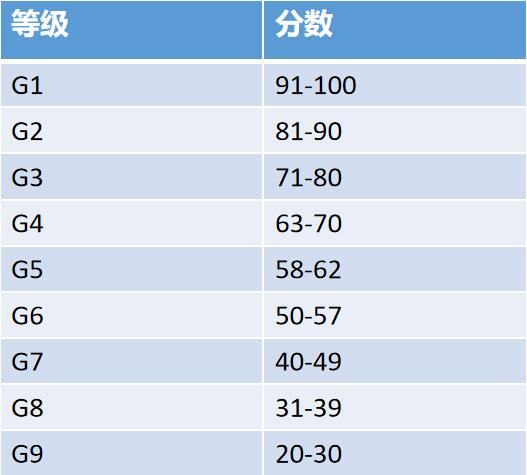
Then the G1-G3 was tested again according to the SCAA standard, and its flavor properties were evaluated in more detail, and the G1 and G2 were rated as Q1 for no less than 85, Q2 for G1 and G2 G3 between 80 and 85, and G3 for all G1Magi G2 G3 below 80.
Q1 and Q2 are classified as boutique grade exports. G4-G9 remains unchanged and is classified as commercial grade export together with G3.
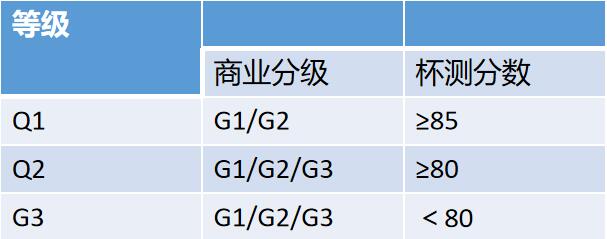
Kenya
Take the particle size of raw coffee beans as the grading standard.
E (elephant bean): the "E" here stands for Elephant, that is, "elephant", but it is not the elephant bean in the coffee bean variety (Maragogype). It is a kind of bean whose two seeds are intertwined with each other because of abnormal development, forming a "seemingly one" bean, which can be regarded as a flaw. Generally speaking, there are two seeds in a fruit, affixed face to face, so there will be a flat side, called flat beans, mother beans. E-grade beans are beans in which two seeds stick together and become super-large in the process of growth. aah! aah! The size of E-grade bean particles is more than 18 mesh (1 mesh is 1 to 64 inches), and the number is rare.
AA: the size of this grade is about 17018 items (about 6.7~7.1mm), which is the Kenyan coffee grade that most people often hear. In boutique coffee, this grade is usually called AA TOP, and it is also a bean that most coffee shops will sell. But AA does not represent the best, it is just that the size of beans should not be confused with flavor.
AB: most coffee beans are in this category. The main reason why they are called AB is that A with a mesh size of 6.80 mm,B is 6.20mm, and these two sizes of coffee beans (An and B) are sold together, so they are called AB, with a size of about 15 million 16 mesh (about 6.0~6.4mm).
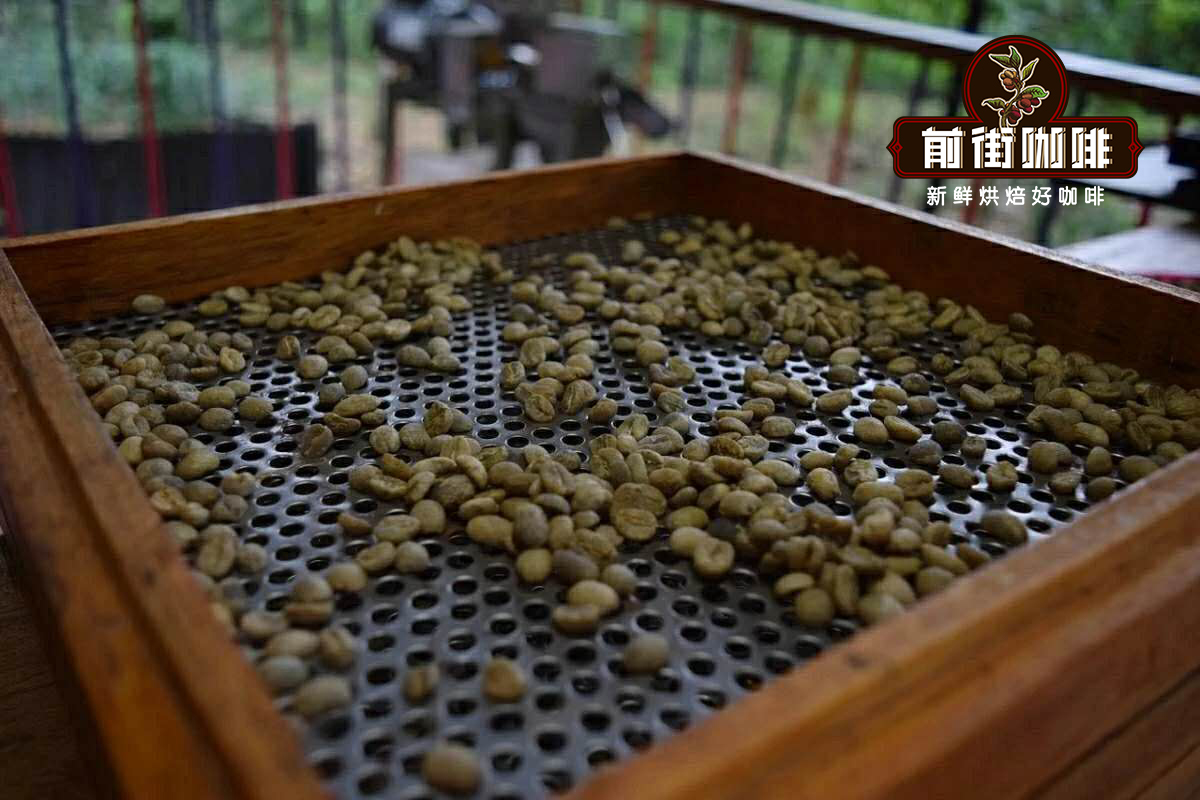
C: the particle size falls between 14015 mesh (about 5.6~6.0mm), which is smaller than that of B grade.
PB: the full name is Peaberry, also known as small round beans, can also be called public beans. Compared with ordinary flat beans, this is also rare, accounting for about 10% of all coffee beans, mainly because only one seed in the fruit has developed to get small and round beans. Some people will particularly like the flavor of PB, so they will pick out the PB and sell it.
TT: these coffee beans are light beans selected from AA and AB beans by air sorter. They are usually light in weight and substandard in hardness, as well as broken and defective beans.
T: lighter beans, broken beans, and even broken fragments of beans selected from C-grade beans.
MH/ML: this kind of coffee beans will not be exported. They are usually coffee beans that are overripe and fall to the ground. They are of poor quality, accounting for about 7% of all coffee beans, only for the Kenyan domestic market.
Tanzania
The coffee grading system in Tanzania is very similar to that in Kenya, which is based on the particle size of raw beans.
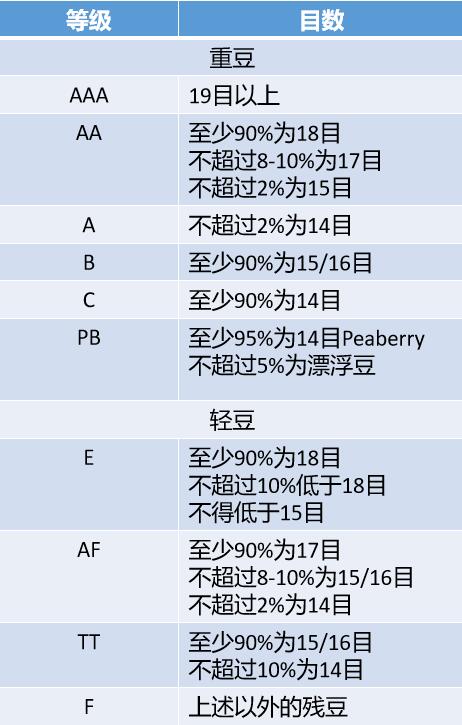
Take the hardness of raw beans as the standard. At the same latitude and on the same plot, the higher the altitude, the greater the temperature difference between day and night, the longer the coffee growing period, the harder the beans, the more nutrients absorbed in the beans, the more obvious the flavor substances will be. As a result, many coffee-producing countries in Central and South America south of Mexico use this as the standard. For example, Guatemala, Costa Rica, Panama and other Central American countries. When these producing countries export raw beans, they have only one grade of SHB.
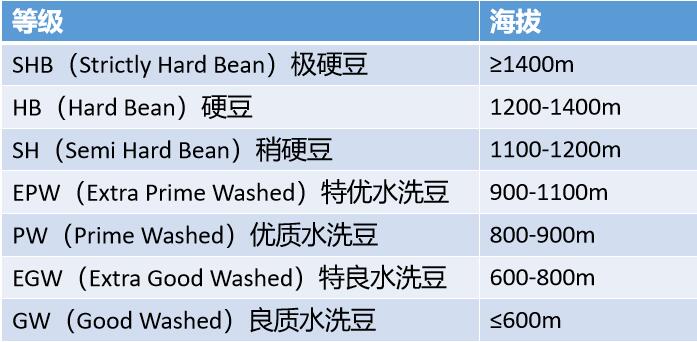
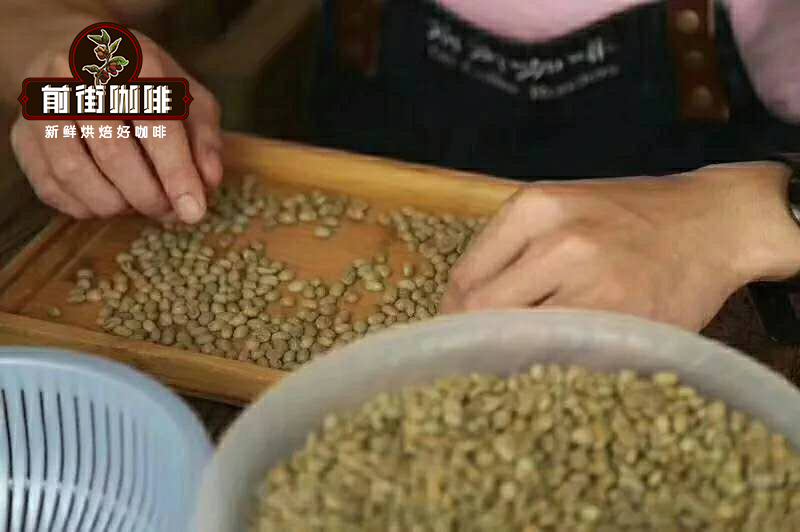
There are also countries with altitude as the grading system, when the higher the altitude, the greater the temperature difference between day and night, the longer the coffee growing period, the harder the beans, the more nutrients absorbed in the beans, the flavor substances will be more obvious. Such as Honduras, El Salvador and Nicaragua.

Colombia
Graded according to the number of coffee items
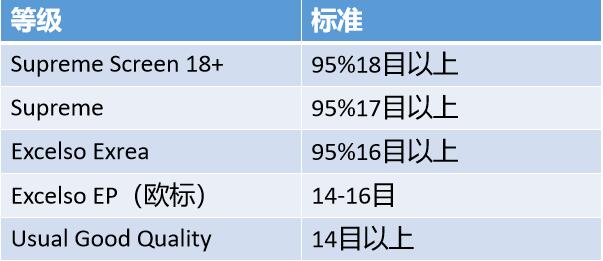
Brazil
NY grading is generally used in Brazil.
Naming method: country + producing area (port) + graded name + cup test quality
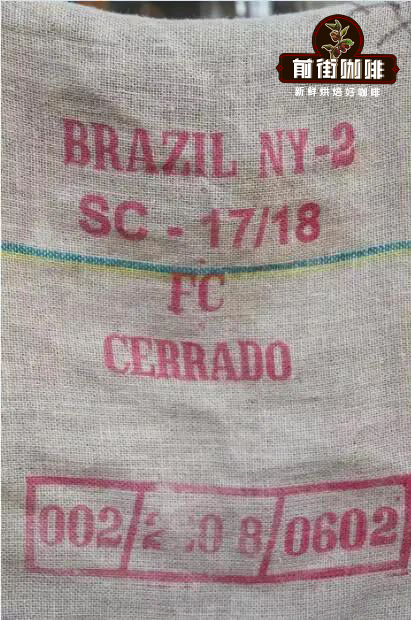
For example: Brazil Santos NY.2 FC, which means Brazil Santos level 2, cup test the best beans.
Brazil believes that only completely flawless beans can become NY.1, while completely flawless beans do not exist. So, among the raw beans in Brazil, the best is NY.2.
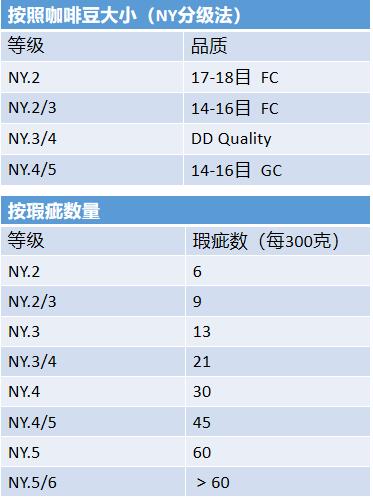
According to the cup test level, it is divided into:
Fine Cup (FC), Fine, Good Cup (GC), Fair Cup, Poor Cup, Bad Cup
Jamaica
Jamaican coffee grades are generally classified according to the number of items.
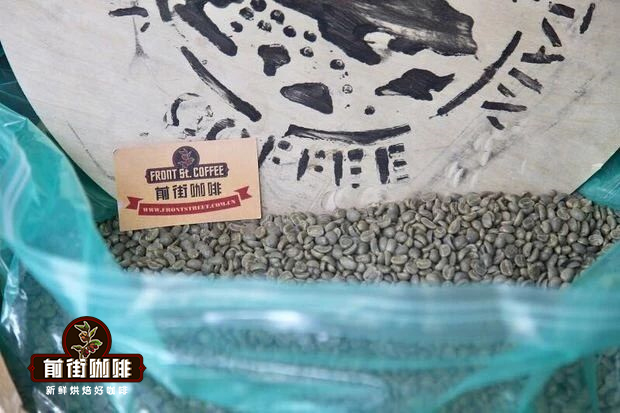
Blue Mountain No. 1, No. 2, No. 3 and Blue Mountain Dou are the only coffee exported in wooden barrels, with three specifications: 70 kg, 30 kg and 15 kg. Other grades of Jamaican coffee are exported in 60 kg gunny bags.
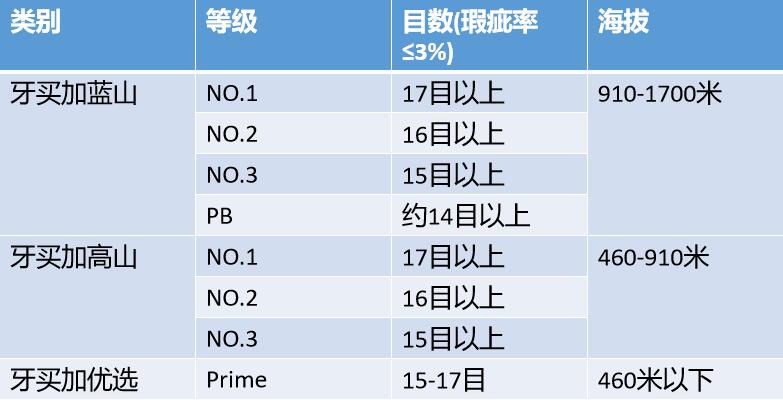
Today, Qianjie Coffee shares the grading of raw coffee beans from these producing countries and areas, hoping to be helpful to readers.
For more boutique coffee beans, please add private Qianjie coffee on Wechat. WeChat account: kaixinguoguo0925
Important Notice :
前街咖啡 FrontStreet Coffee has moved to new addredd:
FrontStreet Coffee Address: 315,Donghua East Road,GuangZhou
Tel:020 38364473
- Prev
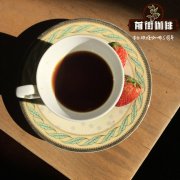
What are the beans of 90 +? What does it mean? What is the hierarchy and password division?
What are the beans of 90 +? What does it mean? What is the hierarchy and password division? 90 + Lotus, 90 + Percy, 90 + Juliet, 90 + Da Liqin and Feicui Manor Rose Summer Litchi Cello Rose Summer (H2 Honey treatment) Taiwan authentic fruit "Litchi LYCHEE" and Yo-Yo Ma's exquisite piano skill "Cello CELLO" named Lycello, which is a reference when Joseph is named.
- Next
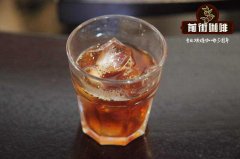
Mocha coffee Yemeni mocha is good? Does mocha mean mocha pot?
"Mocha Coffee" Yemeni mocha, what exactly is "mocha"? Is the mocha good? Does mocha mean mocha pot? There are many answers to this question. Some people say that mocha is a certain place of origin, and some people remember that mocha is sweet chocolate coffee. In fact, authentic mocha coffee is only produced in the Republic of Yemen in the southwest of the Arabian Peninsula and grows at an altitude of 3,000 to 8.
Related
- Detailed explanation of Jadeite planting Land in Panamanian Jadeite Manor introduction to the grading system of Jadeite competitive bidding, Red bid, Green bid and Rose Summer
- Story of Coffee planting in Brenka region of Costa Rica Stonehenge Manor anaerobic heavy honey treatment of flavor mouth
- What's on the barrel of Blue Mountain Coffee beans?
- Can American coffee also pull flowers? How to use hot American style to pull out a good-looking pattern?
- Can you make a cold extract with coffee beans? What is the right proportion for cold-extracted coffee formula?
- Indonesian PWN Gold Mandrine Coffee Origin Features Flavor How to Chong? Mandolin coffee is American.
- A brief introduction to the flavor characteristics of Brazilian yellow bourbon coffee beans
- What is the effect of different water quality on the flavor of cold-extracted coffee? What kind of water is best for brewing coffee?
- Why do you think of Rose Summer whenever you mention Panamanian coffee?
- Introduction to the characteristics of authentic blue mountain coffee bean producing areas? What is the CIB Coffee Authority in Jamaica?

